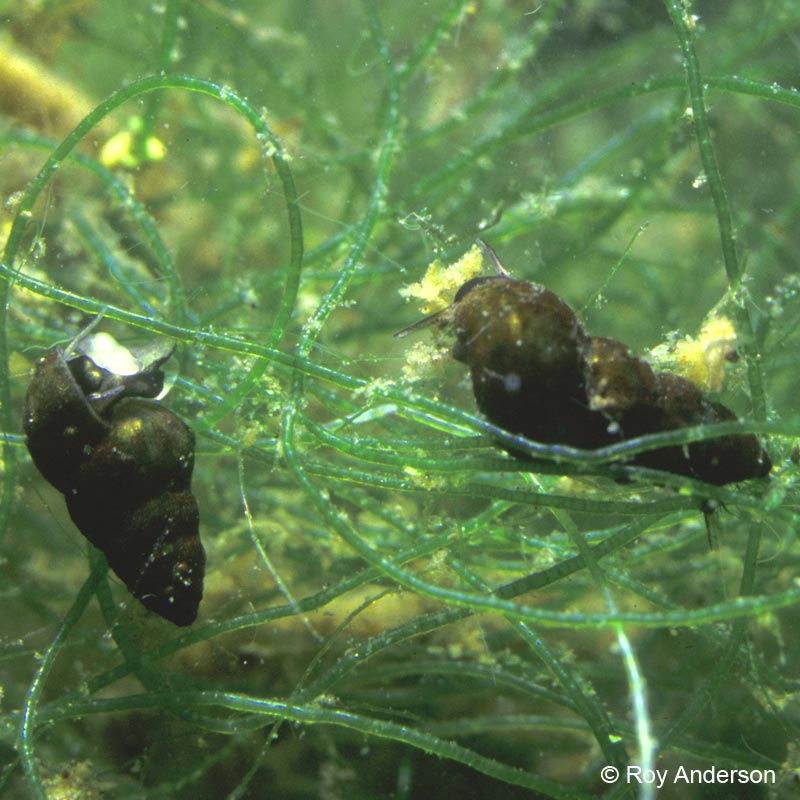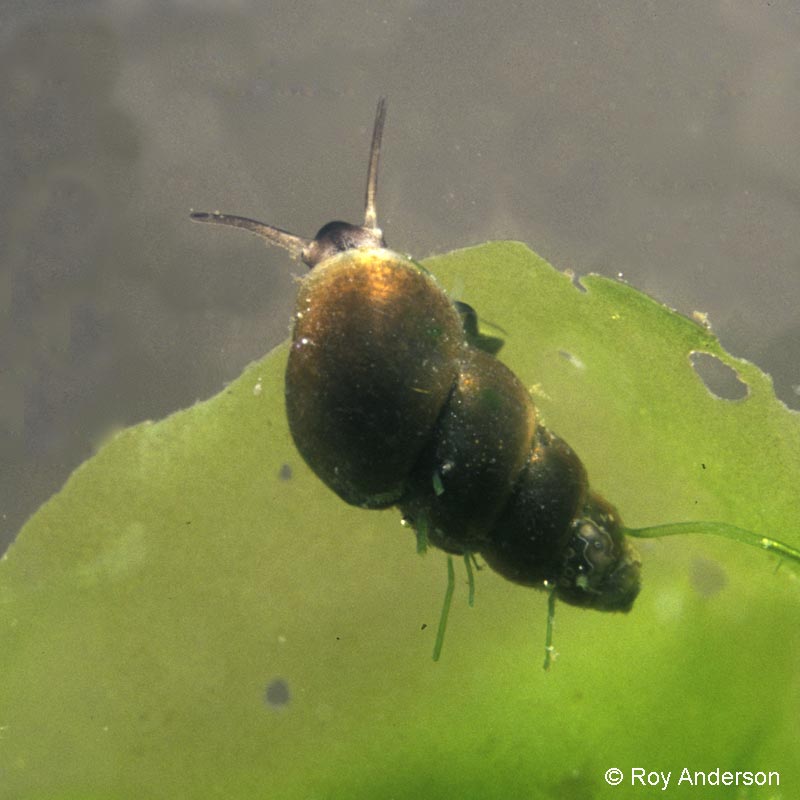| Mollusca : Gastropoda : Littorinimorpha : Hydrobiidae | Snails and slugs |
Ecrobia ventrosa (Montagu, 1803)
Spire snail
 |
| Ecrobia ventrosa |
Description: A small conical, sharp-spired shell with convex whorls and deep sutures plus a body whorl broader in proportion to those above it. The shell is translucent, glossy yellow-brown but this is usually hidden by a matt deposit. The tentacles on the live animal are grey or colourless without marking. Widespread but very local in coastal lagoons. 4-5.5 mm.
World Distribution: Distributed along coasts from southern Norway to the Mediterranean and extending east to Black Sea coasts. Distribution type: coastal Mediterranean-Atlantic (91).
Irish Distribution: Widespread around Irish coasts, particularly in the southern half. In the north-east there appears to have been a decline for reasons that are largely unknown. Of the four sites represented by voucher specimens in the Ulster Museum only one, at Mount Stewart (Ann's Point), Strangford Lough, Down still has extant hydrobiids but these are Hydrobia acuta neglecta. A colony of Ecrobia ventrosa has however been discovered in a small saline lagoon at Cadew Point, on the western shore of Strangford Lough.
Ecology:
- Found in non-tidal lakes or ponds which may be inundated with salt water infrequently, for example at spring tides or during onshore gales.
- In Britain said to prefer slightly lower salinities than Hydrobia acuta neglecta (Fretter & Graham, 1978)
- Four Irish sites examined (Lough Murree, Clare; Mweeloon and Rincarna, south-east Galway; Cadew Point, Down) had salinities of 10.8, 30.0, 30.4 and 34.4 ‰ i.e. a wide range
- Has been found in salinities ranging from 5-49 ‰ in Europe
Key Identification Features:
- A small operculate shell, narrowly conical with convex whorls and deep sutures plus a body whorl broader in proportion to those above it on the spire
- Shell translucent, glossy yellow-brown but often coated with a dark brown matt deposit
- Animal dark, tentacles pale to dark grey or colourless, and without dark markings although occasionally there is a thin dark line running from the tip to halfway down the centre
- Penis elongate and curved, coming to a point
Taxonomy:
- There has been a lot of toing and froing with regard to generic names in use for north-west European Hydrobiidae. The evidence from genetic studies (Wilke et al., 2000) suggests that the Irish Hydrobiidae should be split among three genera, Hydrobia s.s., Ventrosia Radoman and Peringia Paladilhe, with one species each. Wilke et al. (2003) further commented that species of the ventrosa clade in Europe and N. America were closely related. Ecrobia as applied to the American taxon is an earlier name, so it should also be applied to the European species, rather than Ventrosia.
Red list status:
- Vulnerable (VU).
Distribution Map from NBN: Ecrobia ventrosa at National Biodiversity Network mapping facility, data for UK.
iNaturalist: Ecrobia ventrosa at iNaturalist World Species Observations database.
GBIF data for Ecrobia ventrosa | Classification: Gastropoda, Littorinimorpha, Hydrobiidae, Ecrobia
Thumbnails for genus Ecrobia
| Anderson, R., 2025. Ecrobia ventrosa. (Montagu, 1803). [In] MolluscIreland. https://www2.habitas.org.uk/molluscireland/species.php?item=181. Accessed on 2025-04-02. |


